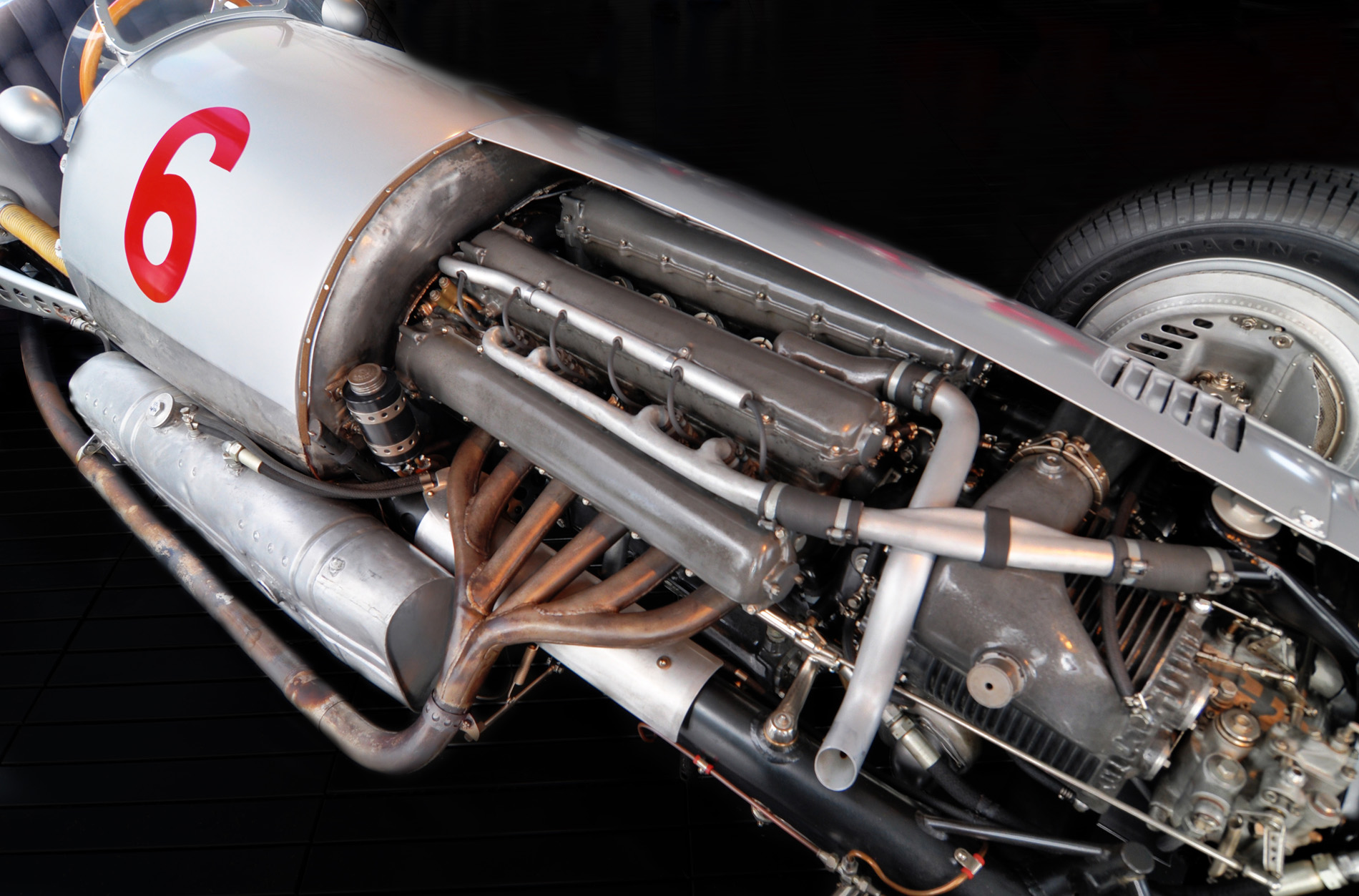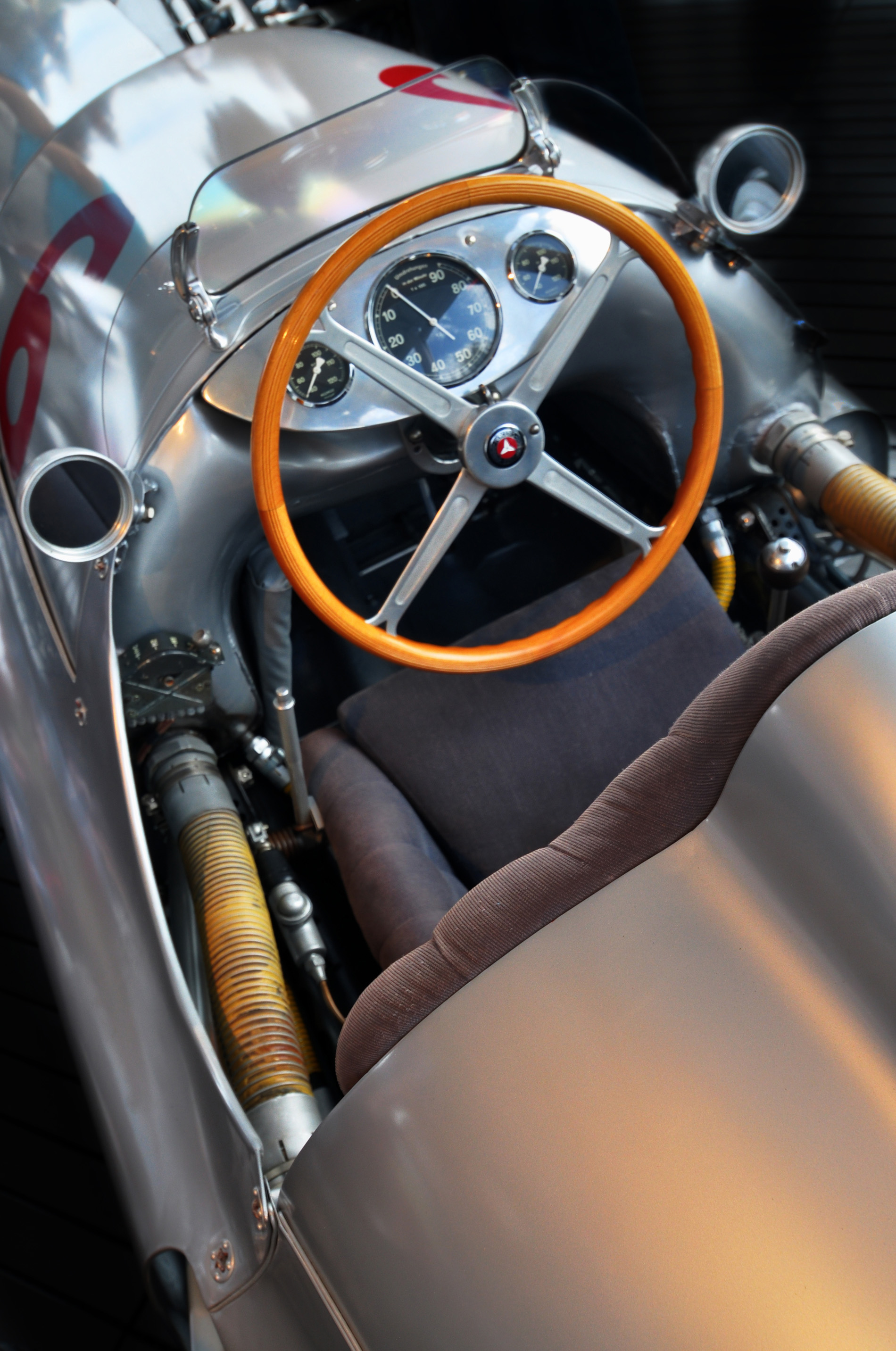
The 1939 Mercedes Benz W154 Silver Arrow Grand Prix was designed by Rudolf Uhlenhaut and is one of the greatest Grand Prix race cars ever built.
Following in a series of multiple quantum leaps in racing technology, this refined W154 Grand Prix race car was the very last Gran Prix car built by Mercedes Benz in the 1930s and also marked the zenith of racing car design in the 1930s. Following new regulations that limited supercharged engines to be limited to a maximum of 3000 cc, Mercedes-Benz under the leadership of Uhlenhaut developed this legendary Silver Arrow. With a two stage supercharged 12 cylinder engine producing 483 horsepower at an ear shattering 7,800 RPM, the W154 could reach approximately 206 mph, depending on the gearing and wheel diameter.
This car was meticulously restored by Paul Russell and Company.
Design and Features
Engine: The W154 is powered by a supercharged 3.0-liter (2993 cc) V12 engine. This engine was capable of producing approximately 470 to 500 horsepower, depending on the setup and race specifications. The engine's supercharger technology was advanced for its time, providing significant power gains.
Chassis and Suspension: The car features a tubular steel chassis with independent suspension at the front and a De Dion axle at the rear, supported by torsion bars. This setup allowed for excellent handling characteristics and stability at high speeds, crucial for Grand Prix racing.
Bodywork: The W154 was aerodynamically designed with a streamlined body to reduce drag and enhance performance on the track. The body was constructed from lightweight materials, optimizing the power-to-weight ratio for racing purposes.
Interior: The cockpit of the W154 was minimalistic and focused on functionality. It included essential instrumentation and controls for the driver, with a racing seat and safety harnesses to ensure driver safety during high-speed racing.
Racing Success and Historical Significance
Dominance in Grand Prix Racing: The W154 was one of the most successful Grand Prix cars of its era, competing in the late 1930s and early 1940s. It won numerous races, including the prestigious Tripoli Grand Prix, the French Grand Prix, and the Swiss Grand Prix.
Technological Advancements: The W154 incorporated cutting-edge technology for its time, including the supercharged engine, advanced suspension design, and aerodynamic bodywork. These innovations helped Mercedes-Benz establish itself as a leader in motorsport technology.
Rivalry with Auto Union: The W154 was part of the fierce rivalry between Mercedes-Benz and Auto Union (Audi) during the pre-war Grand Prix era. This rivalry pushed both manufacturers to innovate and develop increasingly advanced racing cars.
Collectibility
Rarity and Historical Value: The Mercedes-Benz W154 is extremely rare, with only a handful of original cars surviving today. Their historical significance, combined with their racing pedigree and technological innovations, makes them highly coveted by collectors and museums.
Value: Original W154 cars command significant prices at auctions, often reaching several million dollars. Well-documented race history and provenance further enhance their value among collectors of classic and historic racing cars.
Legacy
Influence on Motorsport: The W154's success and technological advancements influenced the future of motorsport, particularly in Grand Prix racing. Its engineering principles and innovations paved the way for modern racing car design and development.
Cultural Impact: The W154, along with its rival Auto Union cars, remains a symbol of Germany's dominance in pre-war Grand Prix racing. Their legacy continues to inspire automotive enthusiasts and historians alike, showcasing a golden era of racing excellence.
You may purchase a print of the 1939 Mercedes Benz W154 in our dElegance 2015 online gallery.


